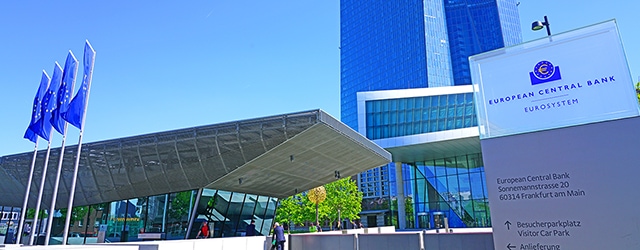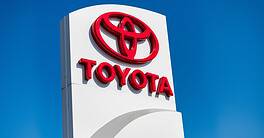Europe is stepping up efforts to unify its financial-services systems, but it will have to work harder to catch up with rivals.

The European Union’s grand plan to establish a more unified and efficient financial-services market infrastructure, which seemed to stall out after the financial crisis and the ensuing eurozone sovereign debt crisis, has revived in recent years.
First, the 2015 launch of the Single Euro Payments Area (SEPA) removed many of the obstacles hampering cross-border payments. Three years later, the revised Payment Services Directive (PSD2) aimed to offer greater choice to consumers in banking and payment services.
Last November, the European Central Bank (ECB) launched Target Instant Payment Settlement (TIPS), which enables banks to settle payments instantly, positioning them to compete more effectively with PayPal and Google Pay as well as Amazon, Apple and Alibaba. Since European banks have generally proved reluctant to join TIPS since its launch, the European Commission has been considering various ways to give the system greater traction.
Currently in progress is the T2/T2S consolidation program, a further transformation initiative that focuses on fund transfers between EU banks. Since late 2007, more than 1,700 banks across the Continent have used the second iteration of the Trans-European Automated Real-Time Gross Settlement Express Transfer, better known as Target2 or simply T2, to effect high daily volumes of euro transactions. A similar dedicated platform for securities transactions, Target2-Securities (T2S), followed in July 2008.
T2/T2S consolidation aims to replace T2 in November 2021 with a new real-time gross settlement (RTGS) system that will optimize liquidity management across all Target services. The technical and functional aspects of T2 and T2S will be consolidated in a single platform that harmonizes and integrates Europe’s cash and securities settlement services.
T2/T2S will mark a major step forward in creating a consolidated financial-services infrastructure for the eurozone. Italy’s TAS Group, which provides software solutions for electronic money, payment systems and capital markets, calls the new system “a big-bang approach that will change the way banks and ancillary systems access services for transactions in central bank money.”
T2/T2S consolidation will enable the eurozone to keep up with the global migration of clearing and settlement systems—including Swift, the UK’s Chaps system, the Federal Reserve’s Fedwire and the private-sector The Clearing House (TCH) in the U.S.—to the ISO 20022 standard for cross-border payments and cash reporting messages, also in November 2021. In June, Swift and Italy’s SIA, provider of SIAnet secure messaging, were confirmed as the network service providers for all Target services.
“Each participant [in T2/T25 consolidation] will have slightly different deliverable timelines, so there will be various challenges to overcome, particularly from a resources perspective,” says Ad van der Poel, head of Product Management EMEA and Global Transaction Services at Bank of America Merrill Lynch (BofAML). “Ideally, resources should focus not only on compliance but also on innovation.”
Migration to ISO 20022 poses a significant challenge for banks, van der Poel says: “Swift’s move from its current MT messaging format to XML creates additional work, as XML messages are not readable by humans. Banks and organizations receiving MT messages know how to read the data, but changing over to XML will be a major change for operations teams, which will have to run training courses to deal with the new format.”
Running to Keep Up
While it has come a long way, the EU can’t relax its push for a more unified financial-services market, says Sander van Tol, partner at Zanders Treasury and Finance Solutions, because “an integrated market assists in achieving the principles of the integrated EU market for free movement of goods, services, capital and labor.”
“Europe is, if anything, behind several other parts of the world in integrating its financial markets infrastructure,” says Diane Nolan, managing director of Financial Services at Accenture Management Consulting. “There are several good examples of progressive markets elsewhere—such as the payment-clearing and settlement-system initiatives pursued by Payments Canada, a raft of reforms introduced by the Monetary Authority of Singapore [MAS] and Australia’s innovations, such as the New Payment Platform [NPP] and this summer’s introduction of open banking.”
While the open-banking concept will take time to establish itself and mature, van der Poel says Australia is “in a good place with an appropriate financial infrastructure, and can now focus on utilizing the resulting opportunities, particularly for commercialization, to the maximum.” The country is pushing ahead with open banking and a new payments platform. Also, as a single market, Australia can integrate more easily and benefit more quickly than the EU, which has a harder job of integrating so many different countries’ systems.
“Our clients are welcoming [T2/T2S] on their treasury side, despite the mass of reform needed in order to take full advantage of the potential benefits,” says Nolan. “Organizations’ apps, particularly on the security side, have grown organically and increased in complexity. Unless they have already begun segregating and digital decoupling, they have a lot of challenges ahead.”
Implementation challenges include cyberrisk, compliance risk and possible leakage between different channels, Nolan adds. However, the new system “will also bring significant gains for Europe, such as liquidity transfers across services.”
T2/T2S consolidation was announced well in advance and should be completed on schedule, says van der Poel. “Although there will be coordination challenges, these should be addressed through a clear focus of resources,” he says. “It will be interesting to see how the industry manages the process. There will be undoubted advantages, not least of which are extended opening hours for Target 2.”
Harmonizing Debt Distribution
The eurozone’s financial-services ration-alization project won’t be over then. The ECB is now turning its attention to creating a harmonized European platform for debt securities issuance and distribution, another area where the Continent appears to lag other parts of the world. The proposed European Distribution of Debt Instruments (EDDI) mechanism went out for public consultation by bond issuers, dealers and investors over the summer and has already gained a seal of approval from Norway’s $1 trillion sovereign wealth fund, one of the world’s biggest investors.
While the ECB is keen for further change, some fintechs complain that the banking industry itself of making only sluggish progress toward T2/T2S consolidation. Accenture has joined forces with TAS Group and KPMG in setting up an Interbank Working Group, which it says will support the sector. But van der Poel rejects the suggestion of slow progress.



